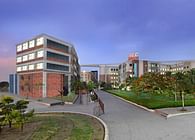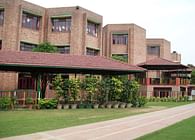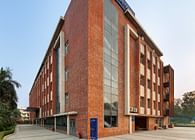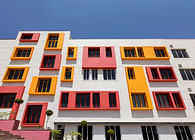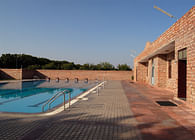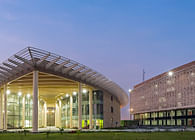
New Delhi, IN
Re-strengthening hospital infrastructure in developing cities
Public healthcare is a primary concern for the sustained development of any country – access to high-quality healthcare services implies a holistically healthy population that can contribute positively to society. A universal right, healthcare remains a divisive issue in India; with medical infrastructure that adheres to national or international standards concentrated mostly in tier 1 cities. The lack of proper health infrastructure for a majority of the population means additional pressure on overburdened metropolitan resources and a lower quality of life in tier 2 and 3 cities.
The redesign of Ashirwad Hospital addressed these concerns, by demonstrating how the design of the built environment can foster community health and wellness, especially pressing for a tier 2 city. The hospital, located in the heart of Varanasi was founded in 1977 as a family-run practice specializing in obstetrics and gynecology's and is currently one of the most prominent healthcare providers in the city. The challenge was to navigate the dense urban context of the city to increase the capacity from the existing 50 to 150 beds and to generally enhance the functioning of the existing building while adhering to national standards of care.
The design of the expanded Ashirwad Hospital employs a vertical zoning system, with the monolithic block carved up into distinct hospital functions by levels – clearly demarcating the public from the private areas. While the old structure has been retained up to the third floor, our interventions included strengthening its structure, refurbishing it, adding another floor and ensuring the seamless integration of the existing block with the new block. The redesign interventions involved employing pile foundations and a lightweight steel structural system for the integrated fourth floor that would prevent damage to surrounding structures..
On the ground floor, the existing plan has been redesigned to accommodate several diagnostic and radiology facilities, examination and sample collection rooms, amenities for staff and admin spaces, and comfortable waiting areas for patients and visitors. OPD consultation chambers have been built on the same floor, as part of the new wing. The Mother & Child Care units and NICU wing are on the first floor, with the rest of the wards and in-patient department (IPD) being incorporated on the second and third floors. The retrofitted fourth-floor houses operation theatres (OTs), pre-and post-operative care units, and intensive care units (ICUs), enabling medical staff to move patients between various stages of critical care with maximum efficiency.
The prime objective of the redesign was to introduce greater spatial flexibility and ease of usage. In accordance with the National Centre for Disease Control guidelines, the passages have been expanded to thrice their original size and the new OTs have been designed as modular units to enable customization as per medical or instructional requirements.
Well-designed spaces of care while fostering community health and awareness, are also conducive to improving the mental wellness of their inhabitants. Taking this into account, the redesign strategically employs a muted palette of pinewood, stone and plaster finishes, inducing a sense of serenity among users. Punctuating this interior envelope are furnishings and signage in soothing tones of teal and green; not only does the colour selection aid in maintaining the sense of serenity, but the distinct contrast also aids user navigation as well. A subtle shift in colour between the different areas of the hospital also indicates a difference in spatial usage without overt gestures. In the NICU wing, vibrant illustrations have been used as a tool of visual engagement for the hospital’s youngest patients.
To compensate for the lack of space on-site, the services have been incorporated into two basements in the new wing. These include services rudimentary to the functioning of a hospital like water storage and treatment plants, effluent treatment plants, and central sterile supply systems but also include facilities that make the building self-sufficient and ensure smooth functioning such as an oxygen plant.
Well-designed medical facilities are a valuable community resource, their impact far-reaching and perennial. Ashirwad Hospital in Varanasi is one such resource that not only provides quality healthcare where there is a need for such, but also sets a precedent for how reinvigoration of existing structures can serve as a key to developing social infrastructure in Tier 2 cities.
Status: Built
Location: Varanasi, IN
Firm Role: Architect
